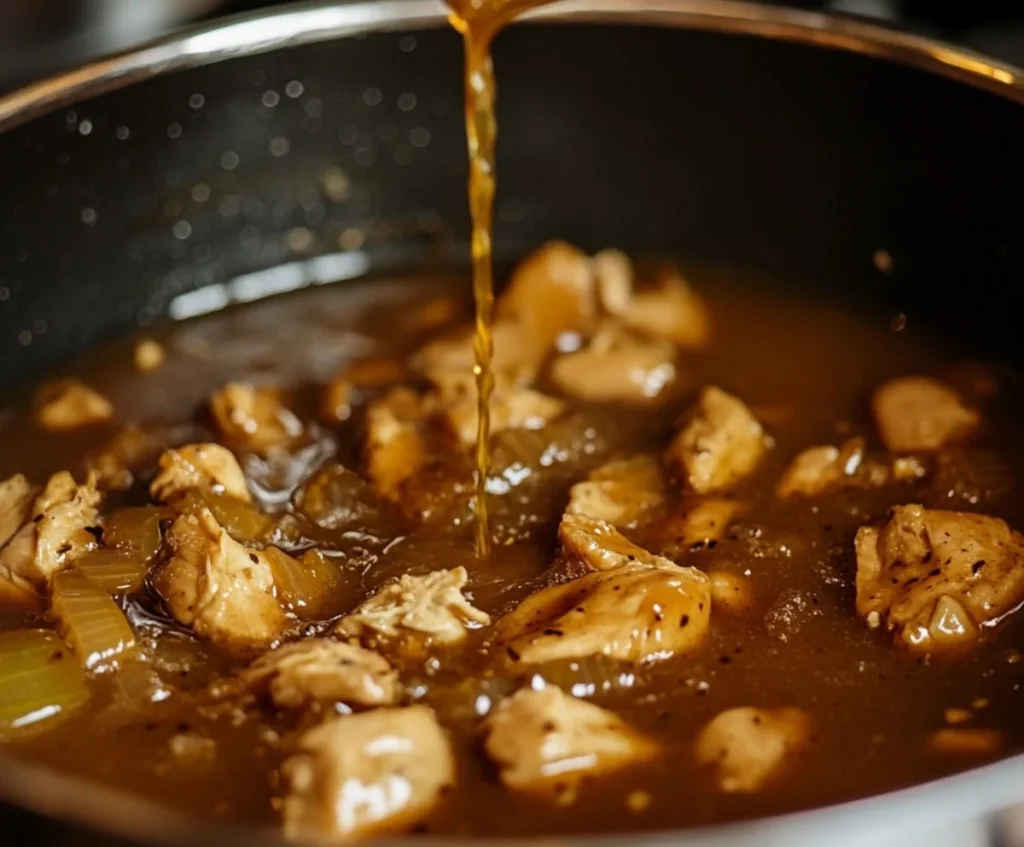If you’ve ever found yourself wondering, how can I make chicken gravy taste better, you’re not alone! Chicken gravy is a classic comfort food, elevating everything from mashed potatoes to roasted chicken. However, sometimes it can end up bland, thin, or lacking the depth of flavor that really makes it shine. Luckily, there are several simple and effective ways to enhance your gravy and make it richer, more flavorful, and absolutely irresistible. Let’s dive into the expert tips that will help you create the perfect chicken gravy every time.
Start with a Quality Stock or Broth
The foundation of a great gravy is a flavorful stock or broth. If you have time, making your own chicken stock is the gold standard. Homemade stock is rich and complex, with layers of flavor from vegetables, herbs, and bones. However, if you’re short on time, store-bought stock or broth can still do the trick.
If you’re using store-bought stock, consider enhancing it. Simmer it with fresh herbs like thyme, rosemary, or bay leaves, and add a few peppercorns to give it more depth. You can also reduce it by simmering for a while to concentrate the flavors. This extra step will make a big difference.
Season It Right
Seasoning is essential to elevate the taste of your chicken gravy. While salt and pepper are basic, there’s so much more you can do with a few other ingredients. Here are some seasonings that will take your gravy from good to amazing:
- Garlic Powder: Adds a savory, umami flavor.
- Onion Powder: Provides a mild sweetness and depth.
- Paprika: Gives a subtle smokiness, especially if you’ve roasted the chicken.
- Cayenne Pepper: Adds just a hint of heat for complexity.
- Thyme: A fragrant herb that pairs wonderfully with chicken.
Taste as you go and adjust the seasoning until it’s just right. A little extra salt or pepper can go a long way, but don’t forget to balance the flavors.

Add Acidity and Sweetness for Balance
Gravy can sometimes become too rich, and a splash of acidity can bring it back to life. A small amount of lemon juice or white wine vinegar can cut through the richness and make your gravy taste brighter and more lively. You don’t need much—just a splash to enhance the overall flavor.
On the flip side, a hint of sweetness can balance out a gravy that’s too sharp. A teaspoon of sugar or a drizzle of honey can round out the flavors, particularly if your gravy is tasting a bit too tangy. Again, add these in small amounts, and taste as you go. Too much can throw the balance off.
Infuse with Fresh or Dried Herbs
Herbs and spices are some of the easiest ways to add layers of flavor to your gravy. Fresh herbs like rosemary, thyme, and sage complement the mild taste of chicken and can infuse the gravy with a fragrant, earthy profile. If you have fresh herbs, chop them finely and add them during the cooking process.
If fresh herbs aren’t available, dried herbs can work just as well. Just remember, dried herbs are more potent, so use them sparingly. A pinch of dried thyme or a sprig of rosemary can go a long way. You can also add bay leaves, garlic, or onions for additional depth. Don’t forget to remove the larger pieces before serving!
Add Fat for Richness
Gravy without fat can feel thin and bland. The fat brings a smooth richness and mouthfeel that is so satisfying. Butter is a classic choice that adds a velvety texture and a rich flavor. You can whisk it in at the end to finish the gravy or use it to make the roux (a mixture of flour and fat used for thickening).
If you want an even creamier gravy, add a splash of heavy cream after the gravy has thickened. The cream will give your gravy a smooth, luxurious finish without being too heavy.
Another option is to use chicken fat (schmaltz), especially if you’ve roasted your chicken. It gives the gravy a deep, authentic chicken flavor, making it more savory and delicious. Just remember, a little fat goes a long way, so add it in small increments until you reach the perfect richness.
Perfect the Texture
A great gravy has a texture that coats your spoon without being too thin or too thick. The most common ways to thicken chicken gravy are flour or cornstarch.
- Flour: To thicken with flour, make a roux by cooking equal parts flour and butter together until golden brown. This will give you a smooth, lump-free base for your gravy. Alternatively, you can create a slurry by mixing flour with water and gradually adding it to the gravy.
- Cornstarch: If you prefer a gluten-free option, cornstarch is a great choice. Mix cornstarch with cold water to form a slurry, then add it to the gravy. Cornstarch thickens quickly and gives the gravy a glossy finish.
Make sure to cook the thickening agent long enough to eliminate any raw flour taste. If your gravy gets too thick, simply add more stock or broth to thin it to the desired consistency.

Use the Drippings for Extra Flavor
Don’t throw away the drippings that collect in the pan when you roast the chicken. These contain a ton of flavor and can take your gravy to the next level. To incorporate the drippings, deglaze the roasting pan with a bit of broth or wine, scraping up the browned bits (fond) that stick to the bottom.
Once you’ve deglazed the pan, add these flavorful bits to your gravy base. The result will be a rich, savory gravy infused with the essence of roasted chicken.
Final Touches for Complexity
For an extra depth of flavor, consider adding a few splashes of Worcestershire sauce or soy sauce. Both of these sauces add a rich umami flavor that enhances the savory notes of the gravy.
A little white wine or sherry can also deepen the gravy’s flavor profile and add a hint of acidity that balances the richness. Just be sure to add these ingredients gradually and taste along the way so you don’t overpower the gravy.
Conclusion
Making chicken gravy taste better is all about enhancing the flavors, balancing the richness, and adding a few key ingredients. By using quality stock, adjusting your seasonings, infusing with herbs, and adding fat for richness, you can create a gravy that elevates any meal. With these simple tips and techniques, your chicken gravy will go from basic to extraordinary, ensuring that every bite is packed with flavor and satisfaction.

